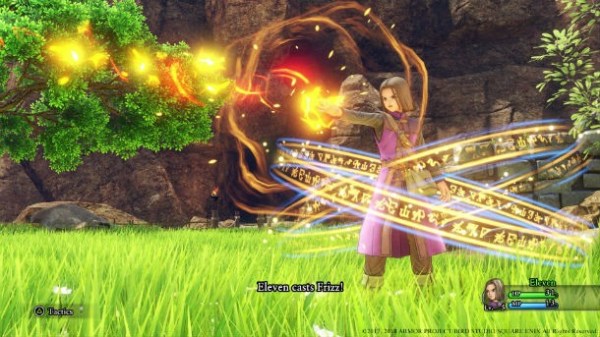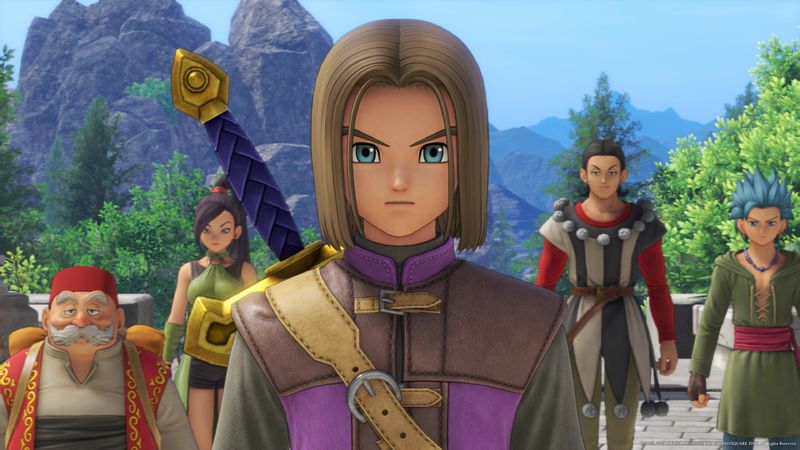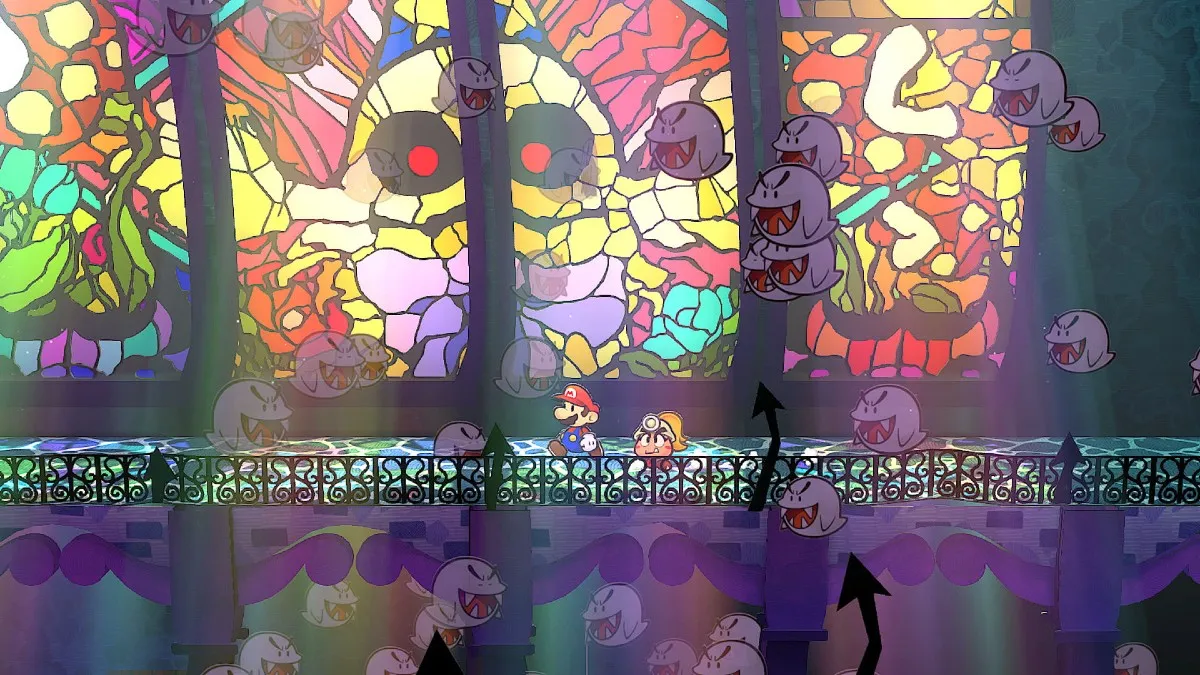JRPGs have had a huge resurgence in recent years, with massive titles like Final Fantasy XV, Persona 5, NieR: Automata, Ni No Kuni II, and more making waves in mainstream media. Advancement and modernization have been a big focus for many of these games, particularly with Square Enix’s poster child, Final Fantasy. That’s what makes Dragon Quest XI: Echoes of an Elusive Age so interesting, considering it’s on the other side of the coin of Square Enix’s biggest series. While Final Fantasy XV strove to be completely modern and open-world, Dragon Quest XI completely embraces the classic tropes and design of JRPGs, and functions as a succinct summary of 30 years of Dragon Quest. More than anything, though, it proves that there’s still a viable place for the traditional JRPG.
On its face, Dragon Quest XI tells a story we’ve seen time and time again. You play as a young man who finds out he’s the Luminary, the chosen hero who will dispatch the forces of darkness. This is JRPG 101, but Dragon Quest XI isn’t concerned with telling a twisting, complex main narrative that pushes the bounds of storytelling. Instead, the game uses a super traditional main story to evoke a sense of nostalgia, while using it to also set up a rich, diverse world. While journeying through the world of Erdrea, Dragon Quest XI goes to painstaking lengths to get you invested in each and every town, as well as each and every party member. In this regard, it uses modern storytelling techniques to flesh out the characters and towns, layering depth on top of JRPG tropes and fairy tale inspirations.
This combination of traditional JRPG with modern sensibilities seeps into every other aspect of the game as well. There are no drastic changes made, a la FFXV, but there’s just enough modernization to make the game appealing to players who may not have experience with a traditional JRPG. During combat you can pick from two different modes, a more traditional camera and a free-form camera that lets you rotate the view, and move your characters around the battlefield. It’s purely aesthetic and makes no changes to combat, but it makes everything more digestible for players that want a bit more control.
Everything about Dragon Quest XI is developed with these two types of players in mind, experienced and newcomers, and the options within the game let you adjust your experience how you want to. Battle view can be swapped to your style, you can use the Draconic Quest options to bump up the difficulty if you’re more experienced, the AI system can control party members automatically with specific tactics, and you can even auto-equip your party to specific specs. These steps help simplify the game’s systems, but the depth and control over everything is still entirely there for those that want it. It’s quite admirable, really, how Dragon Quest XI manages to straddle the line for these two types of players.

Of course, the other modernization for the game come with its phenomenally gorgeous graphics, combining cel-shaded characters with photorealistic visuals. These aspects all combined together manage to make Dragon Quest XI feel fresh and exciting, despite using many of the tried and true systems and mechanics the series has used for 30 years.
In many ways Dragon Quest XI almost feels like a ‘greatest hits’ sequence for the franchise, bringing back tons of references, creatures, items, and more. The story loops in the exploits of an old Luminary named Erdwin, who bears and uncanny resemblance to the heroes of early Dragon Quest games, creating an interesting loop that seemingly brings the series full circle.
Even with all these modernizations, there are still elements that completely resemble classic games. You need to manage each character’s inventory, towns are jam-packed with little secrets and chatty NPCs, party members fill a specific role, and there’s even a switcheroo “true ending.” Dragon Quest XI is pure tradition, boiled and refined, and it works so well. It’s a sweeping experience filled with nostalgia for the JRPG veterans, while simultaneously being a great entry point for those unfamiliar with the genre.
It’s interesting to see a grand new release in 2018 that sticks so closely to traditional style, and it’s not the only one. Octopath Traveler earlier in the year also stuck to tradition, while implementing a few modern changes with its visuals and battle system. Both of these games have sold staggering numbers, especially for titles that call back to history so thoroughly. As of now, Octopath Traveler has sold over one million copies in just a couple months, and Dragon Quest XI has sold over 3 million after being released only in Japan.
This helps cement even further the fact that traditional JRPGs are here to stay, and boy do people want more.





